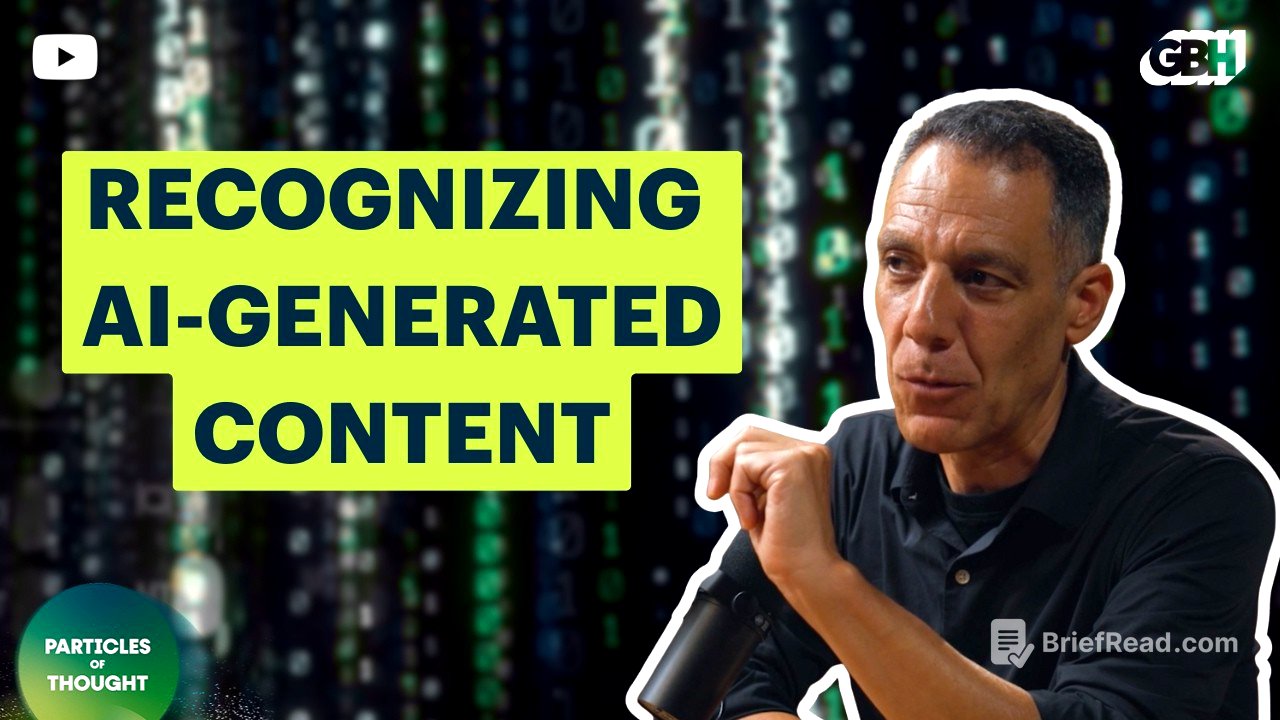TLDR;
This video explores methods for detecting AI-generated content, including images, audio, and video. It covers techniques based on the laws of physics, geometric inconsistencies, packaging analysis of AI-generated files, and the use of imperceptible watermarks. Additionally, it discusses reverse engineering AI tools to identify specific artifacts. The speaker emphasizes the difficulty for the average person to reliably distinguish between real and fake content due to the rapid advancements in AI technology.
- AI-generated content often violates laws of physics and geometry.
- AI-generated files have unique packaging signatures.
- Watermarks can be used to identify AI-generated content.
- Reverse engineering AI tools can reveal specific artifacts.
- It is difficult for the average person to reliably identify AI-generated content.
Introduction to AI Detection Techniques [0:00]
The discussion begins by addressing the core challenge of detecting AI-generated deep fakes. Generative AI learns by analyzing vast amounts of images, audio, and video, but it lacks an understanding of fundamental concepts like optics, physics, and geometry. This deficiency creates opportunities for detection by identifying inconsistencies with real-world physical laws.
Physics and Geometric Analysis [0:36]
One technique involves analyzing shadows in images. In a real-world sunny scene, shadows must converge on a single light source (the sun). AI, operating in a 2D environment, often fails to accurately replicate this 3D phenomenon, leading to physically implausible shadow arrangements. Another method uses projective geometry, observing how parallel lines converge at a vanishing point in photographs. Deviations from this geometric principle indicate potential AI manipulation.
Packaging Analysis of AI-Generated Content [3:03]
AI systems package generated content in specific ways, similar to how different online retailers have distinct packaging styles. By examining the underlying file structure of an image, audio, or video, it's possible to identify the source AI generator (e.g., OpenAI, Anthropic, MidJourney). This packaging analysis can differentiate AI-generated content from content produced by cameras or software like Photoshop.
Active Techniques: Watermarking [4:33]
Google is implementing imperceptible watermarks in content generated by its AI systems. These watermarks act as invisible signatures, verifying the content's origin. Specialized software can detect these watermarks, providing a reliable method for identifying AI-generated material. The presence of a watermark serves as a built-in signal, indicating the content's artificial origin.
Audio Analysis and Reverse Engineering [5:41]
In audio analysis, inconsistencies in reverberation can indicate AI generation. Real-world recordings exhibit reverberation patterns consistent with the physical geometry of the recording environment. AI-generated audio often lacks this consistency, displaying unnatural modulations. Additionally, reverse engineering open-source AI tools can reveal specific artifacts introduced during the generation process, such as bounding boxes used in face-swapping techniques.
The Challenge for the Average Person [7:59]
It is currently very difficult for the average person to reliably distinguish between real and fake content. The techniques required are complex and constantly evolving. Even experts in the field find it challenging to keep up with the rapid advancements in AI technology, making it nearly impossible for casual social media users to detect AI-generated content with any degree of certainty.









